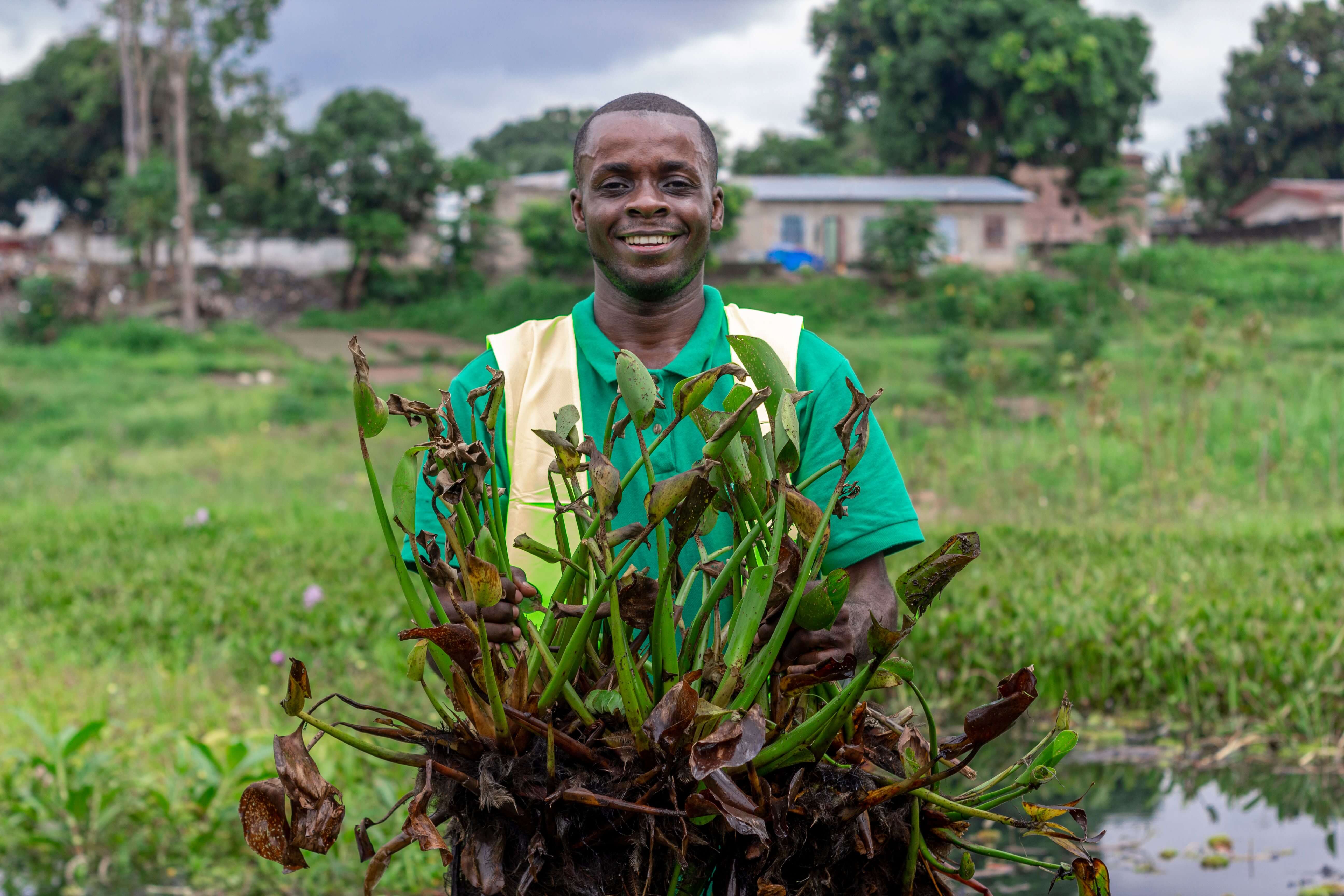Made from the fast-growing and invasive water hyacinth plant, it can hold up to 17 times its weight in hydrocarbons, the compounds that form the basis of crude oil. Divin Koubatouka, a polytechnic engineer, developed the process to address both a botanic and environmental problem at once.
Kukia was designed to solve several problems at once. The invasive water hyacinth plant clogs up waterways and restricts fishing. By paying for its collection, Kukia also provides employment to mostly women in surrounding communities. The fibre production process itself creates further employment. The parts of the plant that aren’t useful for the fibre are used elsewhere - roots are composted and leaves are turned into animal feed. Once the stem fibre has been used on an oil spill or leak, it can be repurposed as a fuel source by cement factories.
The stems are dried, crushed, ground into a fine powder and then turned into a highly absorptive fibre that can be used to suck up oil on the ground, draw in oil spilled on water, or temporarily plug an oil leak in a barrel or other container.
Kouebatouka and his team also aim to train hyacinth harvesters in pre-production methods so as to increase their share of income in the Kukia supply chain.
Kukia is sold directly to petrochemical and pollution control companies, as well as to the public through fuel stations and wholesalers. The Republic of the Congo is a major hydrocarbon producer, with an estimated 10% share in the global oil and fuel market. Oil spills are also common in industrial processes, the automotive and shipping industries, and anywhere hydraulic systems are used.

“We’ve turned a botanical problem into a solution for an environmental challenge, creating employment and skills development along the way. Kukia is simple, scalable and effective, and can make an enormous difference in The Republic of the Congo and worldwide.”
Divin Kouebatouka


